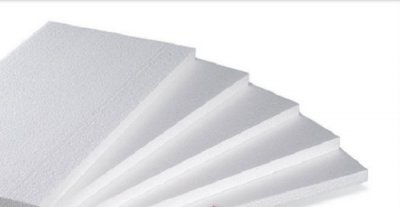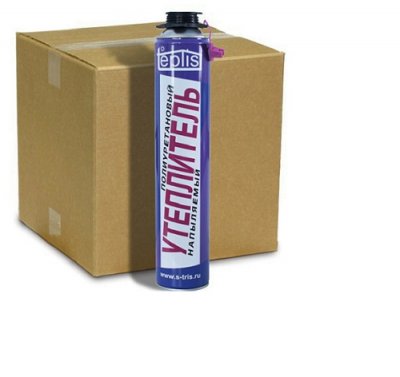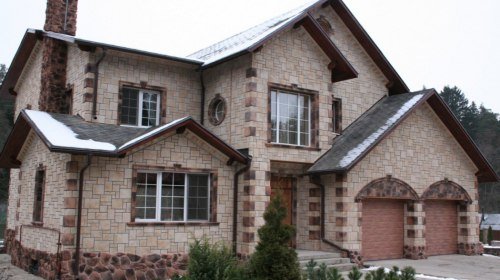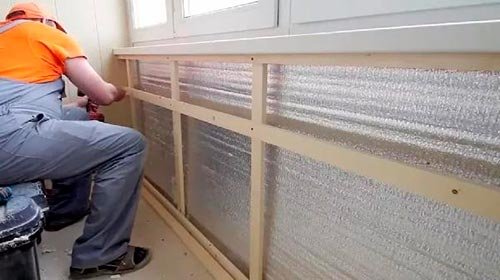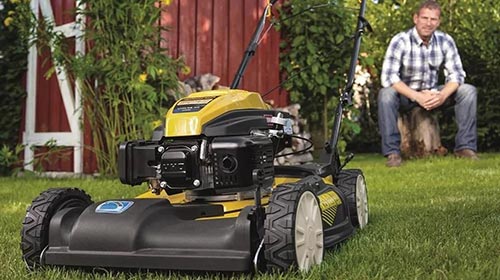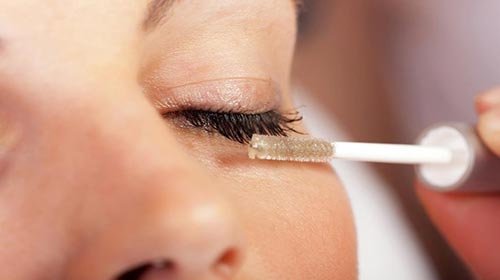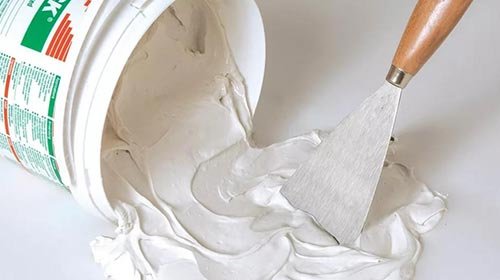A place |
Name |
Feature Rating |
| 1 | Mineral wool | The best universal insulation |
| 2 | Styrofoam | The most popular and affordable insulation |
| 3 | Extruded polystyrene foam (sandwich panel) | Modern insulation for slopes |
| 4 | Glass wool | The most famous insulation |
| 5 | Foam glass | The highest thermal insulation properties |
| 1 | Ecowool | The most environmentally friendly insulation |
| 2 | Polyurethane foam | Easy application, reliable installation |
| 3 | Penoizol | Vapor permeability, no expansion |
See also:
During the construction of houses, our ancestors paid little attention to thermal insulation. Because of this, it took a lot of energy to spend on maintaining the heat in the rooms. Yes, and to find a suitable material with good thermal insulation qualities was not easy before. Today, all homeowners understand the need for home insulation, because energy prices are constantly increasing. Thanks to the development of the chemical industry in the construction market, many affordable and effective heat insulators have appeared. They differ in price, installation method, technical parameters. Therefore, the choice has become richer and more difficult. What properties should the consumer first of all pay attention to?
- To create a cozy microclimate inside the building, you can warm the outside or inside of the building. For a private house, the insulation outside looks optimal, and apartment owners often have to install thermal insulation inside the premises.
- The main criterion for good insulation is low thermal conductivity. The lower the coefficient, the better the material retains heat inside the house. However, few people want to live in a warm but humid room. Therefore, the heat insulator is chosen with good breathability, but at the same time it should not let moisture inside.
- Do not forget when choosing a material and safety. Insulation should be fire resistant, resistant to biodegradation and environmentally friendly.
- Price factor often plays a decisive role. Sometimes you have to sacrifice some qualities because of a limited budget.
In our review got the best insulation for the house. When compiling the rating, the following criteria were taken into account:
- affordability;
- specifications;
- scope of application;
- expert opinion;
- user reviews.
The best insulation in the form of plates and rolls
Traditional plates and rolls are still the most popular insulants. They allow you to independently create a thermal insulation layer outside the house and inside, saving on the work of builders. It should be remembered about the joints and cold bridges through which cold can penetrate the house.
5 Foam glass
 The highest thermal insulation properties
The highest thermal insulation properties
Average price: 985 rub. (0.27 square meters, 0.027 cubic meters)
Rating (2019): 4.6
Foam glass is one of the most modern and efficient heat insulators. Solid cellular panels are suitable for warming the foundation, walls and roof. In some Western countries, foam glass blocks are becoming the main building material used for walling. In our country, panels are usually attached outside to brick or concrete foundations. Thanks to a set of useful properties of foam glass not only protects the house from the cold, but also from noise. The level of noise absorption reaches 56 dB. The material does not absorb moisture, is not susceptible to bio-damage, it is resistant to large temperature differences.
Builders note such positive properties of foam glass as excellent thermal insulation properties, environmental friendliness, strength, fire resistance, chemical and biological resistance, durability. However, due to the high price, the material is not often used in private housing construction.
4 Glass wool
 The most famous insulation
The most famous insulation
Average price: 795 rub. (15 sq. M., 0.75 cub. M)
Rating (2019): 4.7
A very long time in the construction of glass wool used. This thermal insulation material is obtained by melting minerals such as sand, dolomite, soda, limestone, as well as waste from the glass industry. Glass wool was very popular in the construction of wooden houses. This is due to reliable protection from rodents. And now they warm wooden or frame structures with the help of glass wool. The material is sold in the form of plates and rolls. When working with this insulators, it is important to observe safety precautions using goggles, a respirator and gloves.
Despite some archaic glass wool, professional builders use it because of several advantages. It is fire resistant, excellent insulating capacity, versatility, low cost and ease of installation. The disadvantages of the material are sharpness of sharp fibers, strong shrinkage and danger to the body.
3 Extruded polystyrene foam (sandwich panel)
 Modern insulation for slopes
Modern insulation for slopes
Average price: 573 rub. (1.25 sq. M., 0.0125 cubic meters.)
Rating (2019): 4.8
A lot of heat loss in the house occurs through the window blocks. Therefore, when installing windows builders insulate slopes. Extruded polystyrene foam sandwich panel is a very effective heat insulator. It not only prevents the loss of heat, but also gives the window unit a finished look. The panel consists of two thin PVC layers, between which there is a 10 mm thick polystyrene foam. The slopes of these sandwich panels are not afraid of moisture, they do not appear fungus or mold. For builders, the use of sandwich panels is the best option in terms of speed of installation of windows. It is possible to pass turnkey windows with slopes within one day.
Extruded polystyrene foam in the form of sandwich panels has become a popular heat insulator. Installers point out such advantages as the speed of decoration of window blocks, moisture resistance, environmental friendliness and durability. The disadvantages include the high price.
2 Styrofoam
 The most popular and affordable insulation
The most popular and affordable insulation
Average price: 300 rub. (2 sq. M., 0.2 cubic m.)
Rating (2019): 4.8
Foam plastic is very popular in private housing. This is explained by the availability of material and good insulating qualities. White and lightweight panels are obtained by steam foaming polystyrene. One of the important advantages of foam plastic experts believe is water resistance. Therefore, over the years, a mold or fungus will not appear in the insulator. In addition, the insulation does not shrink over time, it is convenient and easy to install the panels, and in the future it is fairly easy to finish. When choosing foam should take into account the density of the proposed product. The material can be used for insulation of wooden, brick, gas silicate walls, as well as lay it under siding.
The advantages of the foam builders include moisture resistance, light weight, low thermal conductivity and ease of installation. The flaws, brittleness and poor sound insulation become obvious shortcomings.
1 Mineral wool
 The best universal insulation
The best universal insulation
Average price: 480 rub. (3 square meters, 0.15 cubic meters)
Rating (2019): 4.9
The most versatile insulating material, according to professional builders, is mineral wool. Insulation can be used for both external insulation and internal. With the help of this heat insulator, the walls, partitions, floors and roofs are finished. Minvat is made from metallurgical slag or basalt by pressing and heat treatment. Therefore, often the material is called stone or basalt wool. Thanks to the fibrous structure, which is filled with air, it turns out a reliable protection against the penetration of cold masses into the house. Mineral wool is available in rolls or slabs.
For a long time, the existence of a minvat has found many adherents. They note such material advantages as an affordable price, low thermal conductivity, durability, environmental friendliness and fire resistance. Of the disadvantages of insulation is hygroscopicity.
The best sprayed insulation
Solid insulation is gaining popularity. It can be created using sprayed materials. This type of insulation has no joints and cold bridges. Only for the application of heat insulator requires special equipment.
3 Penoizol
 Vapor permeability, no expansion
Vapor permeability, no expansion
Average price: 1500 rub. (1 cubic meter)
Rating (2019): 4.7
Penoizol became one of the most popular liquid insulants. It is a urea-formaldehyde foam, which is sold in cylinders. When applied to building structures, it hardens at temperatures above + 15 ° C. Experts believe vapor permeability is one of the most valuable qualities of penoizol. In addition, unlike the foam, this heat insulator does not expand when cured. Therefore, the material is often poured into brick walls, frame structures or under siding. Experts highly estimate the fire safety of Penoizol, it does not burn, but melts without releasing toxic substances.
The main advantages of the liquid heat insulator builders consider a good coefficient of thermal conductivity, high vapor permeability, fire safety. However, the porous structure must be protected from moisture penetration, over time, the insulator shrinks, and a special apparatus is required for the application.
2 Polyurethane foam
 Easy application, reliable installation
Easy application, reliable installation
Average price: 450 rub. (1 l)
Rating (2019): 4.8
A two-component liquid compound is polyurethane foam. It is easy to apply and features reliable installation. The heat insulator is produced in two versions. Closed cell polyurethane foam has a lower coefficient of thermal conductivity and water absorption. And open-celled variety has a high vapor permeability. Therefore, depending on the variant of thermal insulation, it is necessary to choose the most suitable sprayed insulation. It is possible to apply material both on a brick wall, and on a wooden bar thanks to excellent adhesion. It is important to consider the coefficient of expansion, which is 1 to 30 for the closed type and 1 to 90 for open-cell polyurethane foam.
The advantages of the material experts include a good adhesion to different surfaces, low thermal and sound conductivity, environmental friendliness and durability. But unlike penoizol, the cost of such a variant of insulation is much higher.
1 Ecowool
 The most environmentally friendly insulation
The most environmentally friendly insulation
Average price: 535 rub. (15 kg)
Rating (2019): 4.8
Ecowool has now become the most environmentally friendly and fashionable heat insulator. It can be used for thermal insulation of floors, walls and ceilings. Ecowool is produced from waste paper and paper waste, which makes the material absolutely harmless. Although it should be noted that some manufacturers add antiseptics and fungicides to protect against microorganisms. Therefore, environmental friendliness of products may vary. When warming the floor, ecowool can be simply scattered evenly, and special equipment is used to apply on the walls. A paste is added to the paper base, and when spraying onto a brick or wooden wall, the heat insulator sticks securely.
Ecowool has a number of important advantages. It is environmental friendliness, breathability, vapor permeability, the formation of a uniform coating without cold bridges. The disadvantages include caking, the need to use special equipment.



